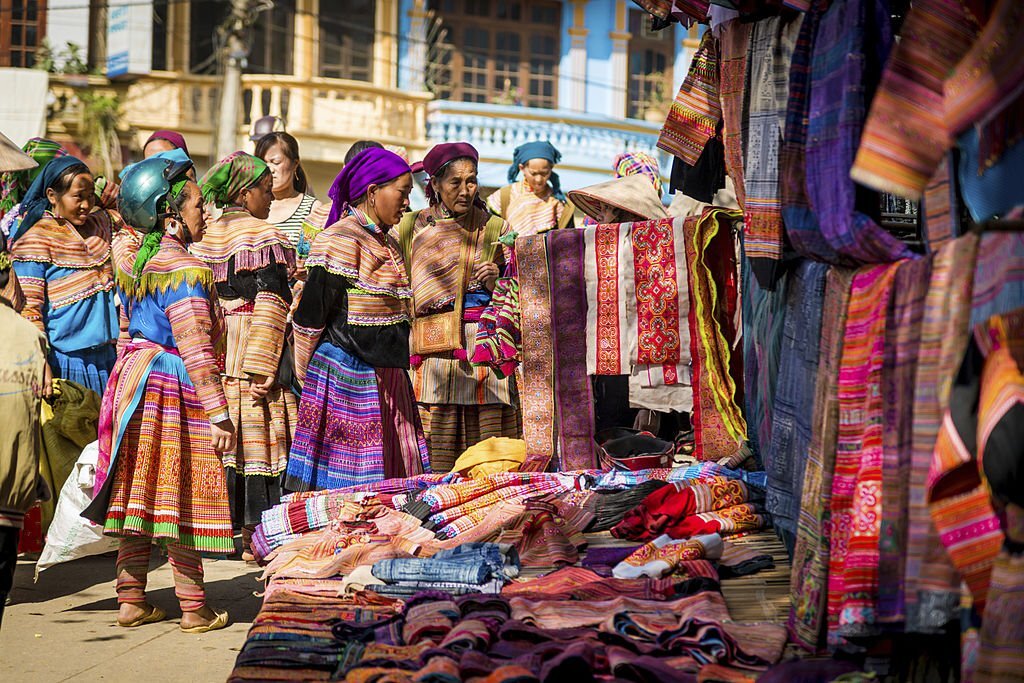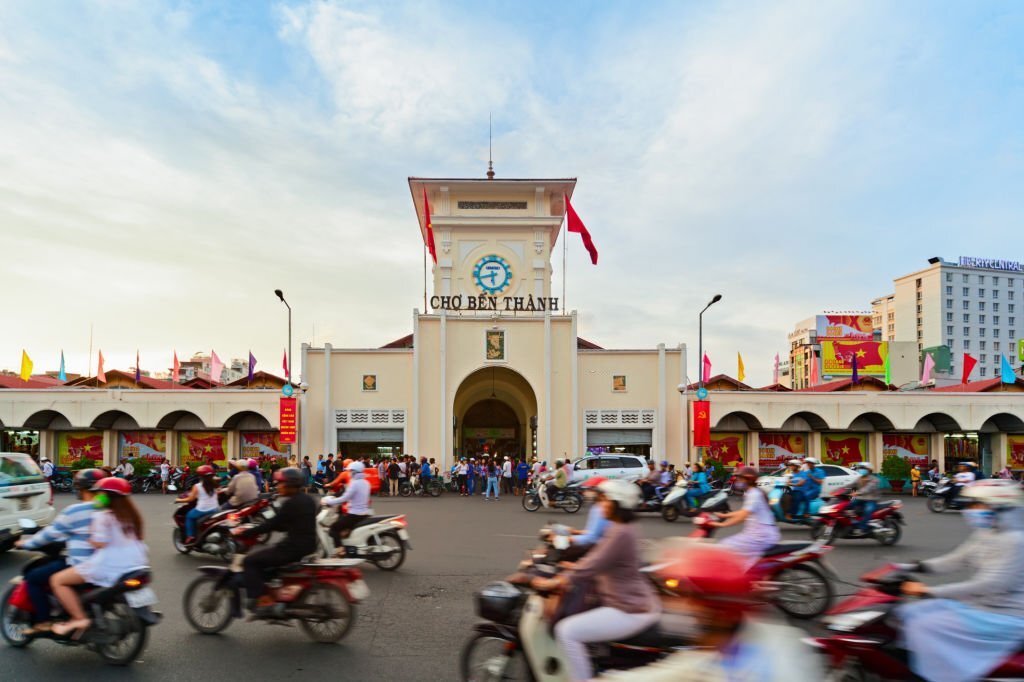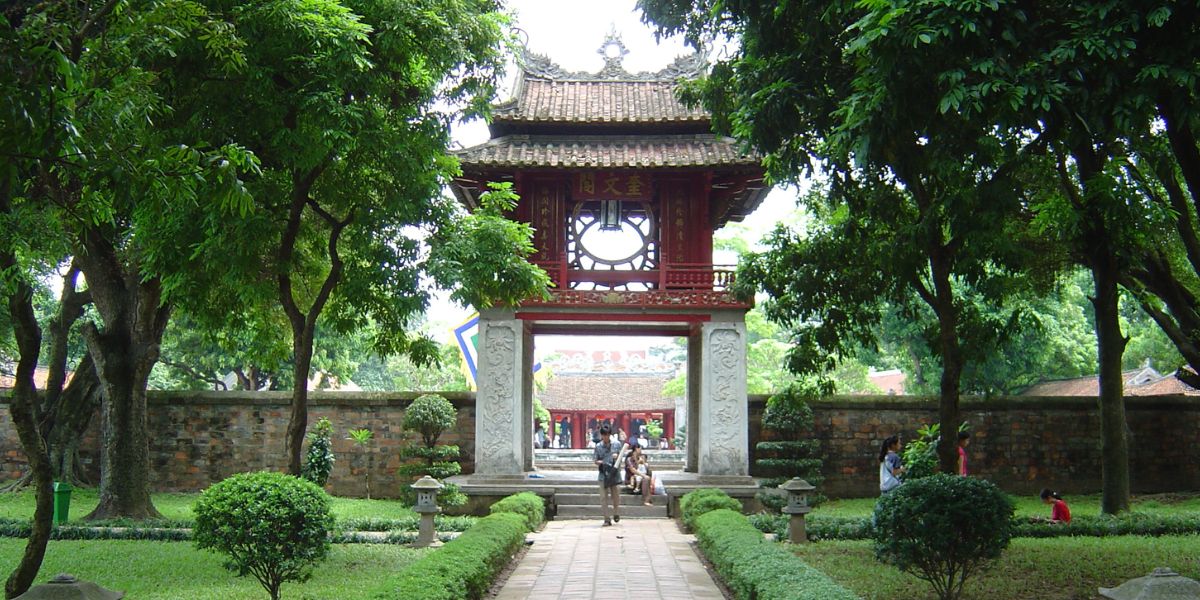The weather and the best time to visit Vietnam vary greatly between the North and South regions. Depending on where you plan to spend most of your time, make sure you're prepared for the weather.
1. Vietnam Overview
Vietnam is unsurprisingly becoming an emerging tropical destination in Southeast Asia. The country boasts a long western coastline stretching from North to South, making it a seafood paradise with many pristine white sand beaches, crystal-clear waters, and picturesque nature. Its geography and centuries of history provide rich cultural experiences. People from different regions have distinct characteristics and lifestyles. The people of Hanoi are poetic, sophisticated, and proud of their heritage with its ancient capital and the remaining 36 bustling Old Quarter streets. The sweet, nurturing, and generous Mekong Delta farmers, much like the river itself, fill the rice baskets that sustain generations of the country. Vietnam is an ideal destination year-round, whether you're looking for a budget-friendly adventure or a luxury vacation. This list is a recommended Vietnam travel guide, highlighting must-do activities from North to South over a 14-day itinerary.
2. Vietnam’s Climate

There isn't a specific "right" or "wrong" time to visit Vietnam as, throughout most of the year, you will experience both sun and rain in varying amounts. This is a country with over 2,000 miles of coastline and three different weather systems.
Although Vietnam is generally warm and humid, the weather can vary significantly from region to region due to the country’s length. Sometimes there is snow (yes, real snow!) in the extreme northern mountains, while southern beaches can have temperatures of 32°C and sunshine. You should imagine the country as three separate destinations when researching the weather for your planned visit, and hopefully, the following information will help you navigate these complexities.
The best time to visit Vietnam is generally from April to late September. This is when the weather is dry, free of storms and floods, and avoids major holidays.
-
Winter in Northern Vietnam (December to February) is cool and dry, while Central and Southern Vietnam have mild, pleasant weather. This is a great time to visit because of the comfortable temperatures and clear skies.
-
Spring (March to May) brings warmer temperatures across the country, with blooming flowers and lush landscapes. This is a great time to visit both the North and Central regions before the summer heat and rain start.
-
Summer (June to August) is characterized by hot and humid weather, especially in the North and South. While Central Vietnam generally has good weather during this time, heavy rains and storms often begin in the following season. Despite the hot weather, it's a vibrant time to explore the country’s beaches and mountains.
-
Autumn (September to November) has cooler temperatures and less rain in the North, ideal for hiking and exploring the countryside. However, this is the rainy season in Central Vietnam, where heavy rain and occasional storms can occur. The South often experiences rain and warm temperatures during this time.
3. Best Time to Visit Vietnam by Region
It is important to note that weather patterns can vary slightly each year, and weather conditions can differ by region. Always check the specific forecast for the time you plan to visit.
3.1 North Vietnam
The best time to visit Northern Vietnam is from October to April when the weather is cooler and drier. During these months, you can enjoy pleasant temperatures and clear skies, ideal for exploring Hanoi, Ha Long Bay, and Sapa. If you want to avoid the cold that often occurs from December to February, the best months to visit are October, November, March, and April.

Bac Ha Ethnic Market, Vietnam
From May to September, Northern Vietnam experiences hot and humid weather with frequent rain. While the landscape is lush and green, heavy rains can affect travel plans and outdoor activities. Here are the weather characteristics for popular destinations in Northern Vietnam:
Sapa
You can travel to Sapa at any time of the year, but March to May and September to November are the best times to visit. The weather is mild and sunny, and the scenery is beautiful. The rice fields are also at their most beautiful during this time, with terraced fields stretching out in shades of gold and yellow.
>>> Read more: The Ultimate Guide to Sapa, Vietnam 2024
Hanoi
Autumn (around September to November) and spring (March and April) are the best times to visit Hanoi. The weather is pleasant with milder temperatures during these periods. In winter, Hanoi can be quite cold, with temperatures sometimes dropping below 50°F. Summer is hot, with average temperatures around 82 to 95°F. July is the hottest month in Hanoi, with an average temperature of 84°F. January is the coldest month, with an average temperature of 63°F. July also has the most sunshine hours per day, averaging 8 hours of sunshine daily. The wettest month is July, with an average rainfall of 210 mm.
Ha Long Bay
Ha Long Bay has a tropical monsoon climate with two main seasons: a hot and humid season from May to October and a cool and dry season from November to April. Although summer and winter attract many visitors, the best times to visit Ha Long Bay are in spring and autumn (March to April and September to October). The weather is very nice and dry, with fewer storms, reducing the risk during your trip. January is the coldest month in Ha Long Bay, with an average temperature dropping to a low of 57°F.
Ha Giang
If you want to explore Ha Giang in Vietnam, you need to choose the right time of year. The weather can make a big difference in your experience. The best times to go are from September to November and from March to May when the weather is cooler and more pleasant. January is the coldest month, so you'll need to wear warm clothes if you go at that time. The average high temperature is only 62°F. June to August is the worst time to go due to the very hot, humid, and rainy conditions. This is the tropical "rainy season," so you might encounter thunderstorms in the late afternoon and evening. December to February is also cool, but not too bad. You can still enjoy exploring if you dress warmly.
Ninh Binh
The best time to visit is during the dry season, from November to April, when the weather is cooler and drier. You won’t have to worry about rain or extreme heat. If you want to see the rice fields in Tam Coc or rural life in Ninh Binh, you can visit from late May to early July, which is the summer harvest season, or from September to October, which is also the rice harvest season. You’ll witness the natural beauty of the area.

Tam Coc - Trang An, Ninh Binh
3.2 Central Vietnam
Central Vietnam is best visited from February to August. During these months, the weather is warm and dry, ideal for visiting Hoi An, Da Nang, and Hue. Beach lovers will find this time perfect for enjoying the coastal regions.
From September to January, Central Vietnam experiences the rainy season, with occasional storms. Although the rain can be heavy, it usually doesn’t last all day, allowing for exploration between showers.
Hoi An & Da Nang
.jpg)
Hoi An, Vietnam
The driest time of the year and the best months to visit Hoi An are from February to April. Humidity is low, and temperatures are quite moderate. Rainy Season: The rainy season in Hoi An lasts from September to January. Heavy rain showers often occur and may be accompanied by storms and floods, particularly in October and November. October is the wettest month in Hoi An with the highest rainfall. This can cause flooding and may disrupt your trip.
For Da Nang, which has many beautiful beaches, the first part of the year to avoid is the monsoon months from September to December when the weather is hot, humid, and rainy. The coldest month is January, with temperatures at 46°F (8°C), and the most sunshine hours per day is 11 hours in July. The rainiest month is October, with an average rainfall of 150 mm. The best time to visit the city is from February to May. During this period, Da Nang has sunny skies and low humidity, making it easy to explore by foot or motorbike. Da Nang’s beaches have an average water temperature of 25°C.
3.3. South Vietnam
The best time to visit Southern Vietnam is from November to April when the weather is dry and temperatures are warm. This is the perfect time to explore Ho Chi Minh City, the Mekong Delta, and Phu Quoc Island.
From May to October, Southern Vietnam experiences the rainy season. Although the rain can be heavy, it usually occurs in short bursts, so you can still enjoy many activities during this period. To get a better understanding of the weather at your intended destination, here’s a specific breakdown:
Ho Chi Minh City

Ben Thanh Market, Ho Chi Minh City (Saigon)
The weather is warm year-round with an average temperature of around 28°C (82°F). The best time to visit Ho Chi Minh City in terms of weather is from December to March. The skies are clear, temperatures are relatively mild, and humidity is at its lowest. The rainy season in Ho Chi Minh City runs from May to November. Particularly in October, high tides can cause severe flooding, so be prepared with waterproof boots and backpacks!
Mekong Delta
The best time to visit is during the dry season, from November to April, when the weather is warmer and drier. You won't have to deal with rain or cold temperatures. The weather is excellent for enjoying the beaches and exploring the stunning natural beauty of the area. Despite its touristy appearance, visiting the Mekong Delta and taking a boat ride is highly worthwhile.
Phu Quoc
If you want to visit Phu Quoc, knowing the best time to go is crucial as the weather can greatly affect your trip. The dry season in Phu Quoc lasts from late October to April of the following year. During this period, the average temperature is about 27-28°C, with highs reaching up to 35°C. This is the best time for sightseeing and relaxation. May is the hottest month in Phu Quoc, with average temperatures ranging from 30.5°C (86.9°F) to 28.8°C (83.84°F).
After the peak season, from late May to early October, Phu Quoc enters the rainy season. During this time, there are often heavy rains, strong sea waves, continuous winds, and high humidity.

Phu Quoc Island, Vietnam
4. Best Time to Visit Vietnam by Month
-
January, February, March: The weather is cool, with occasional drizzle and high humidity in some northern provinces and cities. This period coincides with Vietnam's biggest festival, Tet (Lunar New Year), where you can experience many unique traditional celebrations. Recommended destinations include Hanoi, Nam Dinh, Lang Son, Sapa, and Ha Giang.
-
March and April: The weather is dry, with little to no rain, and the sun is not too harsh. This period is ideal for outdoor activities like hiking, cycling, sightseeing, and exploring nature reserves.
-
June, July, August, September: These months mark the beach season in Vietnam as the country enters summer. It is a popular time for beach vacations and water activities, including swimming, sunbathing, snorkeling, surfing, etc. Vietnam has beautiful beach destinations such as Nha Trang, Da Nang, and Phu Quoc to consider.
-
October, November, December: The weather becomes cooler in the north, while central and southern regions have more pleasant and mild temperatures. This period is suitable for exploring destinations in central and southern Vietnam.
5. When is the Ideal Time to Visit Vietnam?

Temple of Literature, Hanoi
If you love the beach and want to enjoy sunshine and sea, the best time to visit Vietnam is from July to August when the Central Coast has the best weather. You can cruise on Ha Long Bay, relax on the sandy beaches of Da Nang and Nha Trang, or explore the islands of Phu Quoc and Con Dao. However, this is also the peak travel season, so you should book flights and hotels in advance and be prepared for higher prices and crowds.
If you enjoy hiking and outdoor activities, the best time to visit Vietnam is from September to November or from March to May, when the weather is cooler and drier in the north and the highlands. You can hike in Sapa, visit Phong Nha Caves, or cycle around Mai Chau and Ninh Binh. However, you should be prepared for some rain and mud, especially during the rainy season from May to October.
If you want to experience Vietnam's culture and history, the best time to visit is from December to March, when the weather is pleasant and dry in Hanoi and Ho Chi Minh City. You can stroll around Hanoi's Old Quarter, admire colonial buildings and temples, or visit Hoan Kiem Lake. You can also explore Ho Chi Minh City, the Mekong Delta, and Cu Chi Tunnels. However, be aware that it can be quite cold in the north, especially in December and January.
If you want to enjoy Vietnamese cuisine and festivals, any time of year is great, as there are always delicious dishes and colorful events to try and see. You can taste pho, banh mi, spring rolls, bun cha, cao lau, and many other dishes. You can also join Tet (Vietnamese New Year), Trung Nguyen (Day of Wandering Souls), or Buon Ma Thuot Coffee Festival.
Source: https://vietnamvisa.govt.vn/